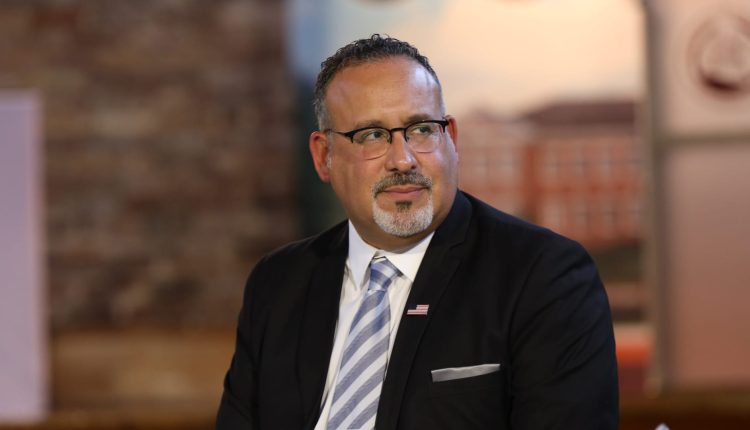The Biden Administration is moving forward in its negotiated rulemaking process to try to forgive student debt for federal borrowers.
The Supreme Court struck down President Joe Biden’s initial plan to forgive up to $20,000 of student debt per borrower in June. But the administration has continued to provide debt relief through existing programs like income-driven repayment and Public Service Loan Forgiveness while exploring ways to provide relief to more borrowers through the negotiated rulemaking process.
On Monday, the administration released a draft regulation proposal outlining what its new forgiveness rules would look like.
“Student loans are supposed to be a bridge to a better life, not a life sentence of endless debt,” Education Secretary Miguel Cardona said in a press release. “This rulemaking process is about standing up for borrowers who’ve been failed by the country’s broken student loan system and creating new regulations that will reduce the burden of student debt in this country.”
The negotiated rulemaking committee will meet later in December to discuss the proposal and aim to reach a consensus on the proposed changes. Once the committee reaches a consensus, the Department of Education will release another draft of rules for public comment next year.
Here are the four groups who could receive relief under the current proposal.
1. Borrowers with balances greater than what they started with
ED’s proposal would relieve up to $10,000 to borrowers who “have experienced balance growth due to interest,” according to a press release.
The department says going forward, this problem will be addressed under the Saving on a Valuable Education plan, which curbs interest accrual when the interest exceeds a borrower’s minimum monthly payment.
2. Borrowers who entered repayment decades ago
The draft regulation would provide “one-time relief,” clearing outstanding balances for borrowers 20 years after entering repayment on undergraduate loans. Other borrowers would receive relief after 25 years of repayment.
3. Borrowers who are eligible for existing relief programs, but have not applied
Under the proposal, borrowers who are eligible for relief through income-driven repayment plans or Public Service Loan Forgiveness but have not applied would be eligible to have their entire outstanding balances erased.
4. Borrowers whose schools or programs failed to meet earning expectations
In an attempt to address institutions that the administration feels have contributed to the student debt crisis, the policy would forgive loans for students who attended schools or programs that “failed to deliver sufficient financial value.”
Borrowers who attended institutions that failed to prove to the Department of Education that their outcomes measure up in terms of debt default and debt-to-earnings rates, or schools that have lost access to Federal aid because of financial misconduct, would be eligible to have their loans forgiven entirely under this proposal.
Additionally, if the institution closes before a determination on its merits is made, those borrowers would also see relief.
DON’T MISS: Want to be smarter and more successful with your money, work & life? Sign up for our new newsletter!
Get CNBC’s free Warren Buffett Guide to Investing, which distills the billionaire’s No. 1 best piece of advice for regular investors, do’s and don’ts, and three key investing principles into a clear and simple guidebook.
Read the full article here

